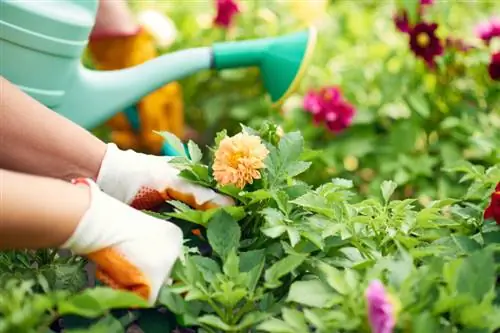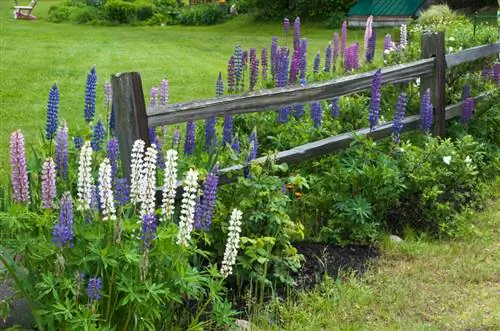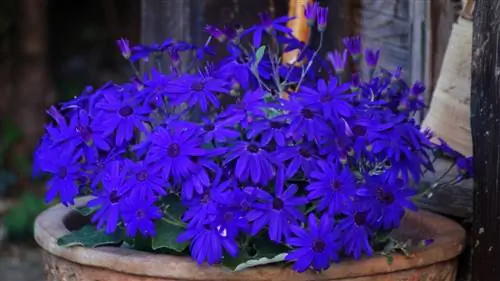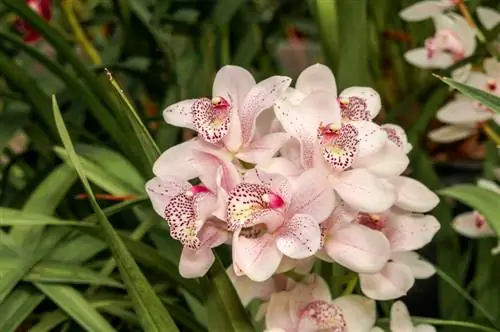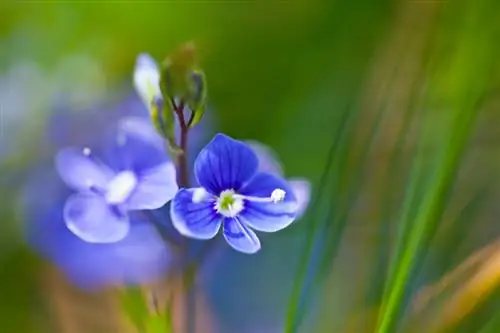- Author admin [email protected].
- Public 2023-12-16 16:46.
- Last modified 2025-01-23 11:20.
Most dahlias are perennial varieties that will beautify the garden and balcony for many years. The long-blooming summer flowers don't need much care. What you need to consider to properly care for your dahlias.
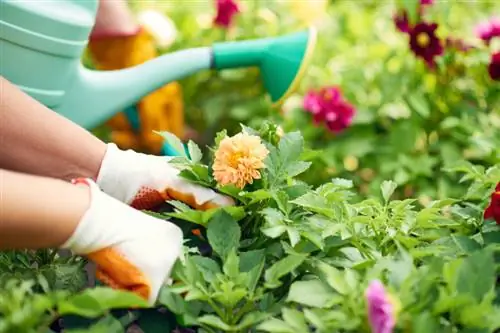
How do I care for dahlias properly?
Dahlias require nutrient-rich soil, moderate watering and plenty of sun. Avoid waterlogging and fertilize organically, but not excessively. Remove spent flowers to extend the flowering period and overwinter the frost-sensitive bulbs in a cool, frost-free location.
Are dahlias watered correctly?
Dahlias should not be too wet or too dry. Allow the soil in the garden or pot to dry out a little. But then it's high time to give water again.
The dahlia tubers cannot tolerate waterlogging at all. However, there is no danger on permeable soil.
You should always water Georgians from below. Since the flowers like to be in direct sunlight, there is a risk that wet leaves will burn.
Do dahlias need to be fertilized?
Dahlias prefer nutrient-rich soil. If you enrich the soil with compost, cattle manure (€22.00 on Amazon) and horn shavings before planting, this is usually enough for the entire gardening season.
If you want to fertilize additionally, only use organic fertilizer so that the georgines do not get too much nitrogen. They then hardly develop any flowers.
From August onwards, you can no longer fertilize dahlias at all, as they are quickly over-fertilized and the tubers will not survive the time in winter quarters.
Can dahlias be transplanted?
Since the tubers are dug up in the fall and replanted in the spring anyway, you should avoid transplanting altogether.
Are dahlias cut?
During flowering, you should cut off anything that has faded immediately. This will extend the flowering period.
In autumn the plant is cut down before it is overwintered. However, leave a root collar of at least six centimeters, as the new shoots will grow from the root collar.
What diseases can occur in georgines?
- Leaf spot disease
- Mildew
- Virus infections
- Dry rot
Virus infections and leaf spot disease usually occur when the dahlias are too shady and too moist. Mildew occurs very frequently, especially in rainy summers with strong temperature differences.
Not much can be done against viral diseases that can be recognized by yellowish-green spots. Infected georgines should be disposed of with household waste.
Dry rot affects the dahlia tubers in the winter quarters. It is probably caused by a virus. You must throw away affected tubers.
What pests do you need to watch out for?
Snails especially like to eat the young shoots. Aphids are also common. Voles give the Georgians a lot of trouble. They eat the tubers and damage them so much that the plant dies.
How are dahlias overwintered?
Since dahlias are not hardy, they must be dug up in autumn and the dry tubers must be overwintered in the cellar or another cool but frost-free place.
Tips & Tricks
The botanical name of the dahlia is Dahlia. The ornamental plant got its name in honor of the Swedish botanist Andreas Dahl.

